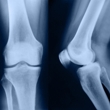
We’re continuing our NatMed Condition Series with osteoarthritis – a condition that affects about 33 million adults in the US. Here’s a quick review of the two most commonly used supplements for managing symptoms and reducing pain.
First up is glucosamine. Taking glucosamine sulfate 1500 mg by mouth daily for up to 3 years modestly improves pain and function in people with knee osteoarthritis. Its benefits seem to vary depending on the product used. The most consistently positive evidence is for a specific, pharmaceutical-grade, crystalline glucosamine sulfate product (Dona). But there’s some debate about whether benefits seen from this product are due to bias from industry sponsored studies or if it’s truly a higher quality product. Also, most research on glucosamine has focused on knee osteoarthritis – it’s not clear if it helps hip or spine osteoarthritis. And when it comes to glucosamine hydrochloride, limited research shows that it doesn’t help.
Patients might also consider chondroitin sulfate. Taking chondroitin sulfate 800-2000 mg by mouth in single or divided daily doses for at least 3 months modestly reduces pain and disability in people with knee osteoarthritis. As with glucosamine, most positive findings are from industry-funded studies using pharmaceutical grade products. And many of these studied products aren’t available in the US.
It’s worth noting that clinical guideline recommendations for both glucosamine and chondroitin are conflicting, with the American College of Rheumatology (ACR) strongly recommending against their use, and the European Society of Clinical and Economic Aspects of Osteoarthritis (ESCEO) strongly recommending for their use. The conflicting recommendations relate to how industry-funded studies were interpreted, with the ACR finding much of the positive evidence to be biased.
Help patients understand the conflicting guidance. Explain that the strongest supporting data are for patients with knee osteoarthritis – in this case, their best bet is with glucosamine sulfate. It’s likely safe when used in doses of 1500 mg daily, but watch out for potential interactions with warfarin. And advise sticking to a product with a third-party quality certification such as USP.
Check out our Comparative Effectiveness chart to learn more about other therapies used for osteoarthritis.
The information in this brief report is intended for informational purposes only, and is meant to help users better understand health concerns. This information should not be interpreted as specific medical advice. Users should consult with a qualified healthcare provider for specific questions regarding therapies, diagnosis and/or health conditions, prior to making therapeutic decisions. Copyright © 2025 NatMed. Commercial distribution or reproduction prohibited. NatMed is the leading provider of high-quality, evidence-based, clinically-relevant information on natural medicine, dietary supplements, herbs, vitamins, minerals, functional foods, diets, complementary practices, CAM modalities, exercises and medical conditions. Monograph sections include interactions with herbs, drugs, foods and labs, contraindications, depletions, dosing, toxicology, adverse effects, pregnancy and lactation data, synonyms, safety and effectiveness.
